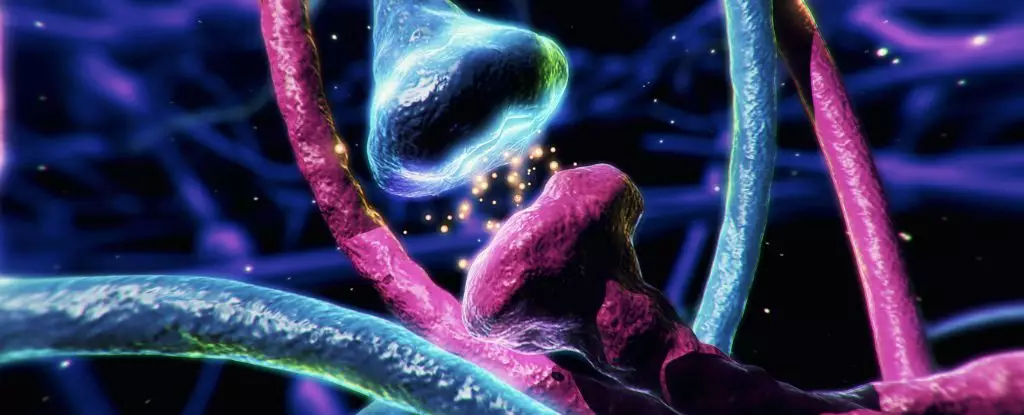For decades, the scientific community operated under a simplified view of dopamine as a slow-moving messenger broadcasting signals across vast regions of the brain. This classic perspective painted dopamine as an indiscriminate sender, diffuse in its reach, influencing countless neurons in a broad, almost “megaphone-like” manner. While this model served as a foundational understanding, recent research reveals a far more intricate picture—one that underscores the astonishing precision and versatility of dopamine signaling.
The emerging evidence suggests that dopamine operates not only as a long-range courier but also as a microscopic, localized whisperer. Instead of broadcasting signals uniformly across large areas, dopamine can be released in targeted bursts, activating neighboring neurons within milliseconds. This dual mode of communication—the slow, widespread signaling and the rapid, localized messaging—hints at a sophisticated system capable of supporting the brain’s complexity. Such a revelation compels us to reevaluate how we interpret dopamine’s influence on behavior, cognition, and neurobiology.
This nuanced understanding is more than academic quibbling; it bears significant implications for how we approach neurological disorders and mental health issues. If dopamine’s role is as intricate as recent findings imply, then the simplistic models that fuel current treatments may be fundamentally flawed or incomplete. Our therapies, especially for disorders like Parkinson’s or schizophrenia, might need to evolve from broad-spectrum interventions into more targeted, precise strategies, tailoring treatment to the specific signaling patterns disrupted in disease states.
The Brain’s Micro-Communications: A Paradigm Shift with Major Implications
The recent microscopic studies conducted on live animals yield compelling insights. Using advanced fluorescent imaging, researchers observed dopamine’s behavior at the cellular level—zooming into the chemical exchanges happening in real time in the brain’s striatum, a key hub involved in movement and reward. Instead of diffuse diffusion, dopamine was seen to activate receptors in confined, neighboring neurons almost instantaneously. This localized activation triggered rapid neural responses, suggesting that the brain can send “neural whispers” alongside its more traditional signals.
This paradigm shift challenges the long-standing idea that dopamine’s primary function is broader modulation. Instead, it reveals a layered communication system, where the brain employs both broad signals for pervasive influence and precise, fast signals for nuanced control. The implications are profound: understanding this dual messaging is critical if we are to grasp how behaviors emerge, how memories are encoded, or how neuropsychiatric disorders manifest.
The research underscores a fundamental truth—our understanding of brain chemistry is still embryonic. The complexity of dopamine signaling has been grossly underestimated, which may explain why many treatments targeting dopamine pathways often fall short. Recognizing dopamine’s short-range whispers opens up fresh possibilities: could we design new drugs that distinguish between its broad and localized actions? Could we develop smarter, more refined interventions that restore the brain’s delicate communication network rather than bluntly modulating dopamine levels?
Rethinking Disorders and the Future of Neurotherapeutics
The clinical implications of this breakthrough are startling. Conditions like Parkinson’s, schizophrenia, ADHD, and addiction are intimately tied to dopamine dysregulation. Yet, current treatments largely aim at broadly increasing or decreasing dopamine levels, often with unintended side effects. If dopamine’s signaling is as intricate and precisely localized as the latest research suggests, then these treatments might be akin to using a sledgehammer where a scalpel is needed.
For Parkinson’s disease, where dopamine depletion leads to motor impairments, understanding the microdynamics of dopamine release could forge new pathways for therapy—perhaps through targeted stimulation of specific neuronal circuits or even gene therapies that restore localized dopamine signaling. Similarly, in psychiatric conditions like schizophrenia, where dopamine pathways are hyperactive or dysregulated, refining our approach to restore the natural balance of localized versus widespread signaling could lead to more effective and less harmful medications.
Moreover, appreciating dopamine’s dual signaling modes enhances our understanding of motivation, reward, and addiction. If the brain relies on quick, localized whispers to reinforce certain behaviors, then disrupting those whispers might be the key to overcoming compulsive habits or addiction. Conversely, reinforcing healthy localized dopamine signals could foster motivation and resilience without the adverse effects associated with current pharmacological approaches.
Ultimately, embracing this complexity mandates a shift from viewing dopamine as a simple “feel-good” neurotransmitter to understanding it as an elaborate, context-dependent messenger. The next frontier in neuroscience involves decoding these localized signals, mapping their precise roles across different brain regions, and designing interventions that respect the brain’s intricate communication web. Only through such sophisticated understanding can we hope to develop treatments that genuinely restore normalcy without collateral damage.

Leave a Reply